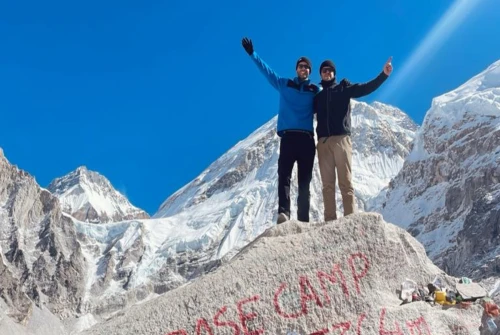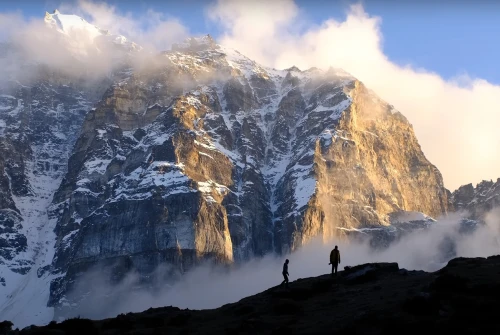Quick Facts About Yala Peak Climbing
Location: Langtang Valley, Rasuwa District, Nepal
Altitude: 5,500m (18,045 ft)
Climbing Style: Non-technical trekking peak (ideal for beginners)
Best Seasons: Spring (March–April) & Autumn (October–November)
Total Duration: Around 11 days (Kathmandu to Kathmandu)
Climb Duration: 2 days from Kyanjin Gompa (with acclimatization beforehand)
Difficulty Level: Moderate – altitude is the main challenge, no advanced technical skills required
Permits Required: TIMS Card & Langtang National Park Entry Permit (no separate climbing permit needed)
Accommodation: Teahouses along the Langtang Valley Trek + tented camping at Yala Peak Base Camp
Highlights: Panoramic summit views of Shisapangma (8,027m), Langtang Lirung, Dorje Lakpa, and Gangchempo
Why Choose Yala Peak?
Yala Peak offers climbers the unique opportunity to experience a true Himalayan summit without technical gear. With basic trekking fitness, you can reach the top and enjoy breathtaking views of peaks like Langtang Lirung and Shisapangma.
Many climbers choose Yala Peak as an acclimatization peak before attempting higher Himalayan summits such as Island Peak or Mera Peak. It helps your body adjust to altitude while providing a sense of accomplishment and confidence for future climbs.
The Langtang Valley is rich in Tibetan Buddhist culture, with monasteries, prayer flags, and traditional Tamang villages along the route. This makes Yala Peak climbing a perfect blend of adventure and cultural immersion.
Unlike the busier trails of Everest or Annapurna, Yala Peak remains relatively peaceful, allowing you to enjoy the serenity of high-altitude landscapes and authentic village life.
Finally, Yala Peak provides a compact two-week Himalayan adventure, making it ideal for trekkers who want to combine trekking and peak climbing into a single, unforgettable journey.
Yala Peak Highlights at a Glance
Achievable Himalayan Summit – At 5,500m, Yala Peak is one of the easiest trekking peaks in Nepal, perfect for beginners.
Unbeatable Views – From the summit, enjoy a 360° panorama of Shisapangma (8,027m), Langtang Lirung, Dorje Lakpa, and other snow giants.
Scenic Langtang Valley Trek – Combine the climb with one of Nepal’s most beautiful short treks through rhododendron forests, yak pastures, and Tamang villages.
Cultural Immersion – Experience Tibetan Buddhist culture in Langtang villages and visit Kyanjin Gompa Monastery and the famous yak cheese factory.
Trekking + Camping Adventure – Stay in cozy teahouses during the trek and camp at Yala Peak Base Camp for the full Himalayan mountaineering feel.

Yala Peak Expedition Itinerary
Here’s a detailed Yala Peak climbing itinerary combining trekking, acclimatization, and cultural experiences. You can choose the classic 11-day schedule or the extended 15-day itinerary for a more relaxed pace.
Classic 11-Day Itinerary (Kathmandu to Kathmandu)
Day 1: Drive from Kathmandu to Syabrubesi (1,550m) – 7 hours. Begin your journey into the Langtang Valley.
Day 2: Trek to Lama Hotel (2,380m) – 6 hours, passing forests and small villages.
Day 3: Trek to Mundu via Langtang Village (3,430m) – 6 hours. Enjoy scenic views of the Langtang River and mountains.
Day 4: Trek to Kyanjin Gompa (3,870m) – 3 hours. Explore the village and visit the monastery.
Day 5: Acclimatization hike to Kyanjin Ri (4,770m) – 5 hours. Prepare your body for high-altitude climbing.
Day 6: Day hike to Tserko Ri (5,000m) – 7 hours for additional acclimatization and panoramic views.
Day 7: Rest day at Kyanjin Gompa. Recover and prepare for the summit.
Day 8: Trek to Yala Kharka Base Camp (4,750m) – 5 hours. Set up camp and prepare for the climb.
Day 9: Summit Yala Peak (5,500m) & descend to Kyanjin Gompa – 12 hours. Enjoy breathtaking Himalayan views from the top.
Day 10: Trek back to Lama Hotel (2,380m) – 6 hours.
Day 11: Trek to Syabrubesi & drive back to Kathmandu – 7 hours.
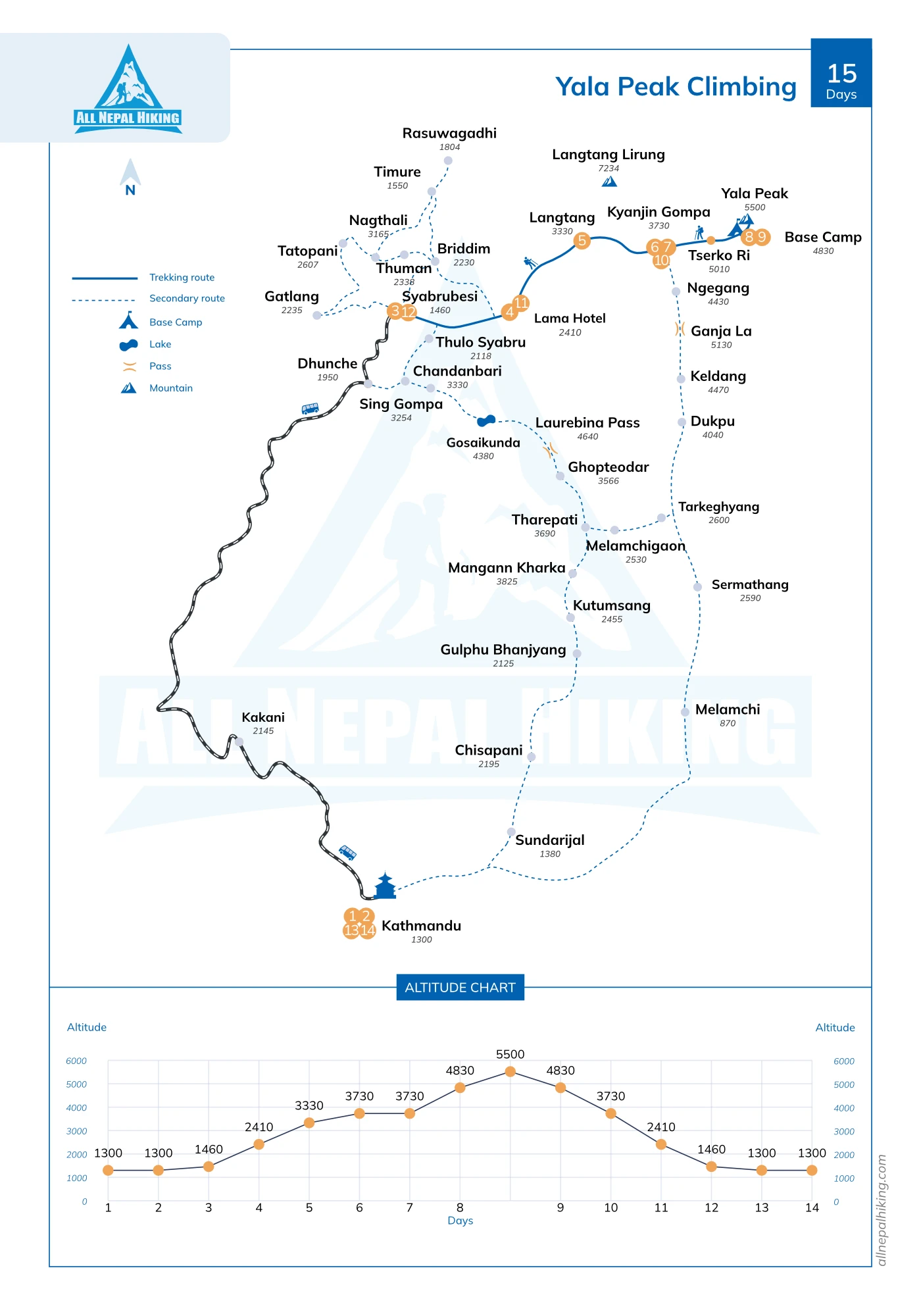
Extended 15-Day Itinerary (Relaxed Pace + Kathmandu Arrival/Departure)
Day 1: Arrival in Kathmandu. Settle in your hotel.
Day 2: Pre-trip meeting, final shopping, and gear check in Kathmandu.
Day 3: Drive from Kathmandu to Syabrubesi (1,550m).
Day 4: Trek to Lama Hotel (2,380m).
Day 5: Trek to Langtang Village (3,430m).
Day 6: Trek to Kyanjin Gompa (3,870m).
Day 7: Acclimatization day at Kyanjin Gompa. Optional hike to Kyanjin Ri or Tserko Ri.
Day 8: Trek to Yala Kharka Base Camp (4,750m).
Day 9: Summit Yala Peak (5,500m) & descend to Base Camp.
Day 10: Trek back to Kyanjin Gompa (3,870m).
Day 11: Trek to Lama Hotel (2,380m).
Day 12: Trek to Syabrubesi (1,550m).
Day 13: Drive back to Kathmandu.
Day 14: Free day in Kathmandu for sightseeing, shopping, or rest.
Day 15: Departure from Kathmandu.
Permits & Regulations for Yala Peak
To trek and climb Yala Peak, all visitors are required to obtain a few essential permits to enter the Langtang Valley and ensure a safe trekking experience. The first is the Langtang National Park Entry Permit, which costs approximately USD 30. This permit is mandatory for anyone trekking in the national park, as it helps the park authorities manage conservation efforts and monitor visitor safety. The second is the TIMS (Trekkers’ Information Management System) Card, costing around USD 20, which is required for all trekkers traveling independently or in groups. The TIMS card acts as a registration and safety tool for trekkers, allowing authorities to track your location in case of emergencies.
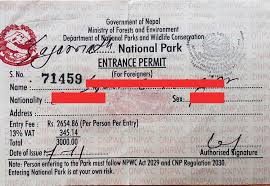
Unlike other Himalayan trekking peaks such as Island Peak ,Mera Peak or lobuche east peak , Yala Peak does not require a separate climbing permit. This makes it an ideal choice for beginner climbers or those looking for a less bureaucratic, more accessible peak experience. Despite the lack of a climbing permit requirement, hiring a local licensed guide is highly recommended. Guides are invaluable for navigating snow-covered or unclear sections of the trail, ensuring safe camp setup at Yala Kharka Base Camp, managing logistics, and providing essential support during the summit attempt.
Permits can be easily arranged in Kathmandu at trekking agencies or offices of the Nepal Tourism Board, or directly at entry points such as Dhunche or Syabrubesi. Many trekking agencies also handle permits on your behalf when booking a guided expedition, saving you time and reducing paperwork.
Pro Tip: Always carry a copy of your permits during the trek, as park rangers and local authorities may request them at checkpoints along the Langtang Valley. Having permits ready not only ensures compliance but also supports sustainable tourism and the conservation of Nepal’s pristine Himalayan regions.
Difficulty & Preparation for Yala Peak
Climbing Yala Peak requires a good level of trekking fitness, as you will face long walking days ranging from 5 to 7 hours, including some steep and challenging ascents. While the route is classified as a trekking peak by the Nepal Mountaineering Association (NMA), the main challenge for climbers is altitude rather than technical difficulty. Proper acclimatization is essential, which can be achieved through a few days at Kyanjin Gompa and side hikes to nearby viewpoints such as Kyanjin Ri and Tserko Ri.
No prior climbing experience is required for Yala Peak, making it ideal for beginners or trekkers seeking their first Himalayan summit. However, familiarity with using crampons and walking on snow or icy sections is helpful, especially during the summit attempt in colder months. This peak is perfect for adventurers who want a taste of mountaineering without the extreme risks associated with higher or more technical peaks like Island Peak,Pisang peak or Mera Peak.
Pro Tip: Building endurance through regular trekking, stair climbing, or cardio exercises before your trip will make the Yala Peak expedition much more enjoyable and safe.
Cost of Yala Peak Climbing
The total cost of a Yala Peak expedition varies depending on whether you join a guided package or trek independently. For those opting for a guided package lasting 11–12 days, the price typically ranges from USD 1100 to 1,400 per person. This usually includes all necessary permits, a licensed guide, porter services, meals, transport, and camping equipment at Yala Kharka Base Camp.
For trekkers who prefer to go independently, the daily cost is approximately USD 25–40, covering meals, lodging in teahouses, permits, and local transport. Even when trekking independently, hiring a local climbing guide for the summit attempt is highly recommended to ensure safety, especially in snowy or unpredictable conditions.
Tip: Booking through a reputable trekking agency can simplify logistics, reduce stress, and provide access to experienced guides familiar with the Yala Peak route and the Langtang Valley.
Accommodation & Food on the Yala Peak Trek
Along the Langtang Valley Trek, trekkers typically stay in teahouses or guesthouse lodges, which provide basic rooms with a bed and blanket. Some lodges also offer hot showers for an additional fee. Meals are available at these teahouses and usually include local and familiar dishes. Common options include dal bhat (rice and lentil soup), noodles, soup, fried rice, pancakes, tea, and coffee, providing sufficient energy for long trekking days.
At Yala Kharka Base Camp, accommodation shifts to tented camping, where meals are prepared by your guide or cook. The tents are sturdy for high-altitude conditions, and meals are designed to be nutritious and filling, helping climbers maintain energy for the summit attempt.
Tip: Carry some high-energy snacks like chocolate, nuts, or protein bars, as they are handy during long summit days when immediate meals may not be available.
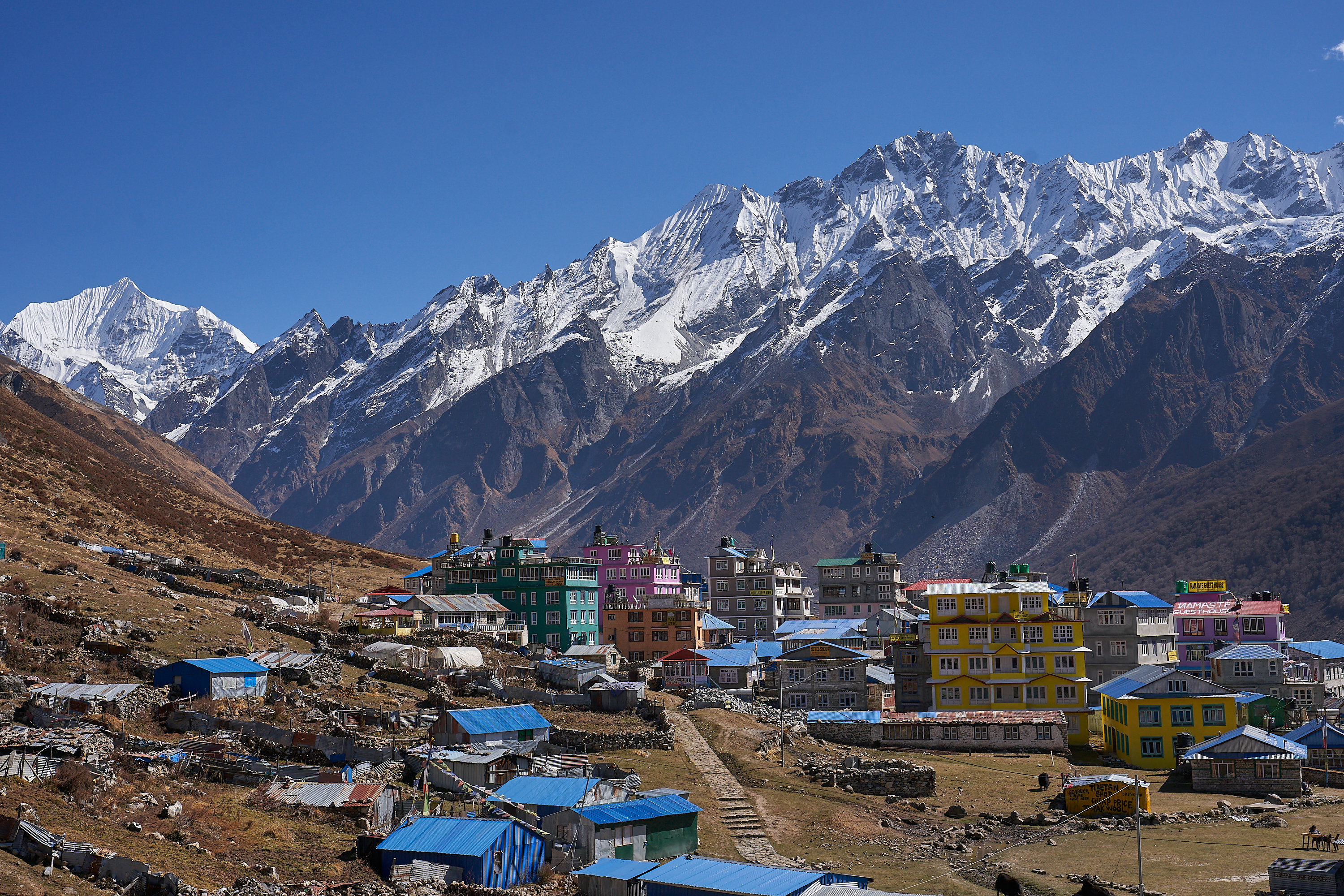
Best Season to Climb Yala Peak
The best time to climb Yala Peak is during spring (March–April) and autumn (October–November). In spring, trekkers enjoy clear skies, mild weather, and blooming rhododendron forests, making the trails vibrant and scenic. Autumn offers stable weather, crisp mountain views, and excellent visibility of the surrounding peaks, making it the most popular season for Yala Peak expeditions.
Climbing during winter (December–February) is possible but challenging, as temperatures drop significantly, snow covers higher sections, and many teahouses remain closed. The monsoon season (June–September) is generally not recommended due to heavy rainfall, landslides, slippery trails, and poor visibility, which can make trekking unsafe.
Pro Tip: Planning your trek during spring or autumn not only ensures favorable weather but also increases the likelihood of witnessing spectacular Himalayan panoramas, including Shisapangma, Langtang Lirung, and Dorje Lakpa.
Wifi, Charging & Drinking Water on the Yala Peak Trek
Along the Langtang Valley Trek, wifi is available at most teahouses, typically costing between free and USD 4 per use. Purchasing an NTC SIM card before your trek ensures that mobile data works in many areas of the valley, though signal strength may vary at higher altitudes.
For electricity, charging your devices is generally possible at teahouses for a fee ranging from USD 1 to 5, depending on the location. It is highly recommended to carry a large power bank, which allows you to charge phones, cameras, or other electronics without relying solely on lodge electricity.
Regarding drinking water, it is advisable to bring a portable water purifier bottle. This not only ensures safe drinking water but also saves money and helps reduce plastic waste from bottled water. Many trekkers refill at teahouses, rivers, or village taps along the trail.
Pro Tip: A reliable water purifier, such as the Grayl Ultralight, allows instant purification of river or tap water and is far more convenient than chemical tablets that require waiting before drinking.
Insurance for Yala Peak Climb
Before attempting Yala Peak, it is crucial to have comprehensive best travel insurance that covers high-altitude trekking and climbing up to 6,000 meters, as the trek and summit involve significant altitude exposure. Your insurance should also include helicopter evacuation in Nepal, which is essential in case of serious illness, injury, or altitude-related emergencies.
Some of the recommended insurance providers for Himalayan expeditions include World Nomads, Global Rescue, and other mountaineering-specific insurance companies that offer coverage tailored for trekking and climbing activities. Even if you are physically fit and experienced, insurance provides peace of mind in case of unexpected events during your Yala Peak adventure.
Pro Tip: Always carry a copy of your insurance policy and emergency contact numbers while trekking, and inform your guide about your coverage in case assistance is needed.
Cultural Highlights on the Yala Peak Trek
The Langtang Valley is steeped in Tibetan Buddhist culture, offering trekkers a rich and immersive cultural experience. Along the trail, you will encounter colorful prayer flags, chortens (stupas), yak pastures, and monasteries, reflecting the spiritual traditions of the region.
The village of Kyanjin Gompa (3,870m) is a cultural and trekking hub, home to an ancient monastery and a yak cheese factory, both of which are worth visiting to understand local craftsmanship and lifestyle. Interactions with the warm and resilient Tamang people, who inhabit the valley, add immense cultural value to the expedition, providing insight into their daily lives, traditions, and hospitality.
Pro Tip: Respect local customs by dressing modestly, asking permission before taking photos of people or monasteries, and participating in cultural exchanges whenever possible.
Essential Packing List for Yala Peak
Trekking Gear:
Sturdy hiking boots (waterproof recommended)
Trekking pole
Quick-dry clothing (shirts, pants, underwear)
Warm layers (fleece or insulated jackets)
Lightweight down jacket for cold evenings
Rain jacket or windproof shell
Thermal base layers (top and bottom)
Climbing Gear:
Crampons (for snow/ice sections)
Gaiters
Heavy-duty summit down jacket
Gloves (inner and outer layers)
Beanie and warm hat
Headtorch with extra batteries
Sunglasses with UV protection
Accessories & Essentials:
Sunscreen and lip balm
Water purifier bottle (Grayl recommended)
Large water bottle or hydration system
Power bank and charging cables
Personal first-aid kit (bandages, blister care, painkillers)
Lightweight trekking backpack (40–50L)
Small daypack for summit days
Snacks and energy bars
Sleeping Gear:
Tent (provided by guide for base camp)
Sleeping mat (provided by guide)
Sleeping bag (provided by guide)
Optional/Convenience Items:
Camera or GoPro for capturing summit views
Notebook or journal
Travel-sized toiletries
Hand sanitizer and wet wipes
Lightweight trekking sandals (for evenings at teahouses)
Pro Tip: Keep your backpack under 15–18 kg. Focus on layering your clothing and carrying multipurpose items to stay warm while minimizing weight.
Yala Peak vs Island Peak vs Mera Peak
Nepal is home to several famous trekking peaks, and climbers often compare Yala Peak, Island Peak, and Mera Peak before deciding which summit to attempt. Each peak offers a unique challenge, altitude experience, and Himalayan scenery. Here’s a detailed comparison:
Feature | Yala Peak | Island Peak | Mera Peak |
Altitude | 5,500m | 6,189m | 6,476m |
Region | Langtang Valley | Everest Region | Makalu-Barun / Hinku Valley |
Duration | 10–12 days | 16–18 days | 15–20 days |
Difficulty | Moderate – Non-technical | Moderate to Difficult – Requires basic climbing skills | Moderate – High altitude, longer endurance required |
Climbing Style | Trekking peak (no major technical gear required) | Technical trekking peak (crampons, harness, ice axe) | High-altitude endurance trek with glacier crossing |
Highlights | Ideal for beginners, panoramic views of Shisapangma & Langtang Himal | Iconic Himalayan peak with views of Everest, Lhotse, and Ama Dablam | Nepal’s highest trekking peak with incredible Himalayan panorama |
Best For | Beginners & short treks | Aspiring mountaineers looking for technical practice | Trekkers with strong fitness seeking high-altitude experience |
Permit | No separate climbing permit (only TIMS + Langtang NP Permit) | Climbing permit required from NMA | Climbing permit required from NMA |
Summary:
Yala Peak is perfect for beginners or trekkers with limited time who want a non-technical summit experience combined with cultural immersion in the Langtang Valley.
Island Peak offers a moderate technical challenge, suitable for trekkers aiming to gain experience with crampons, ice axes, and glacier travel while enjoying views of the Everest region.
Mera Peak is the highest of the three and ideal for climbers with strong endurance who want to experience longer treks, higher altitudes, and panoramic Himalayan vistas.
Pro Tip: If it’s your first Himalayan climb or a short expedition is preferred, Yala Peak is highly recommended. For those seeking technical climbing practice before higher peaks, Island Peak is ideal, while Mera Peak is best for experienced trekkers targeting the highest trekking peaks in Nepal.
Which Peak Should You Choose?
If you are planning your first Himalayan climb or a shorter expedition, Yala Peak is the ideal choice. It offers an achievable summit within 2 weeks, making it perfect for beginners or as an acclimatization climb before attempting higher peaks.
For those seeking a technical climbing challenge in the Everest region, Island Peak is a great option. This trek requires the use of ropes, ice axes, and crampons, providing valuable experience for aspiring mountaineers.
If your goal is to experience Nepal’s highest trekking peak, then Mera Peak is the best choice. It demands longer trekking days, higher endurance, and careful acclimatization but rewards climbers with incredible Himalayan panoramas.
Pro Tip: For first-time climbers, Yala Peak is the most beginner-friendly trekking peak in Nepal. Once comfortable with altitude and trekking experience, Island Peak and Mera Peak offer excellent next steps for more advanced Himalayan adventures.
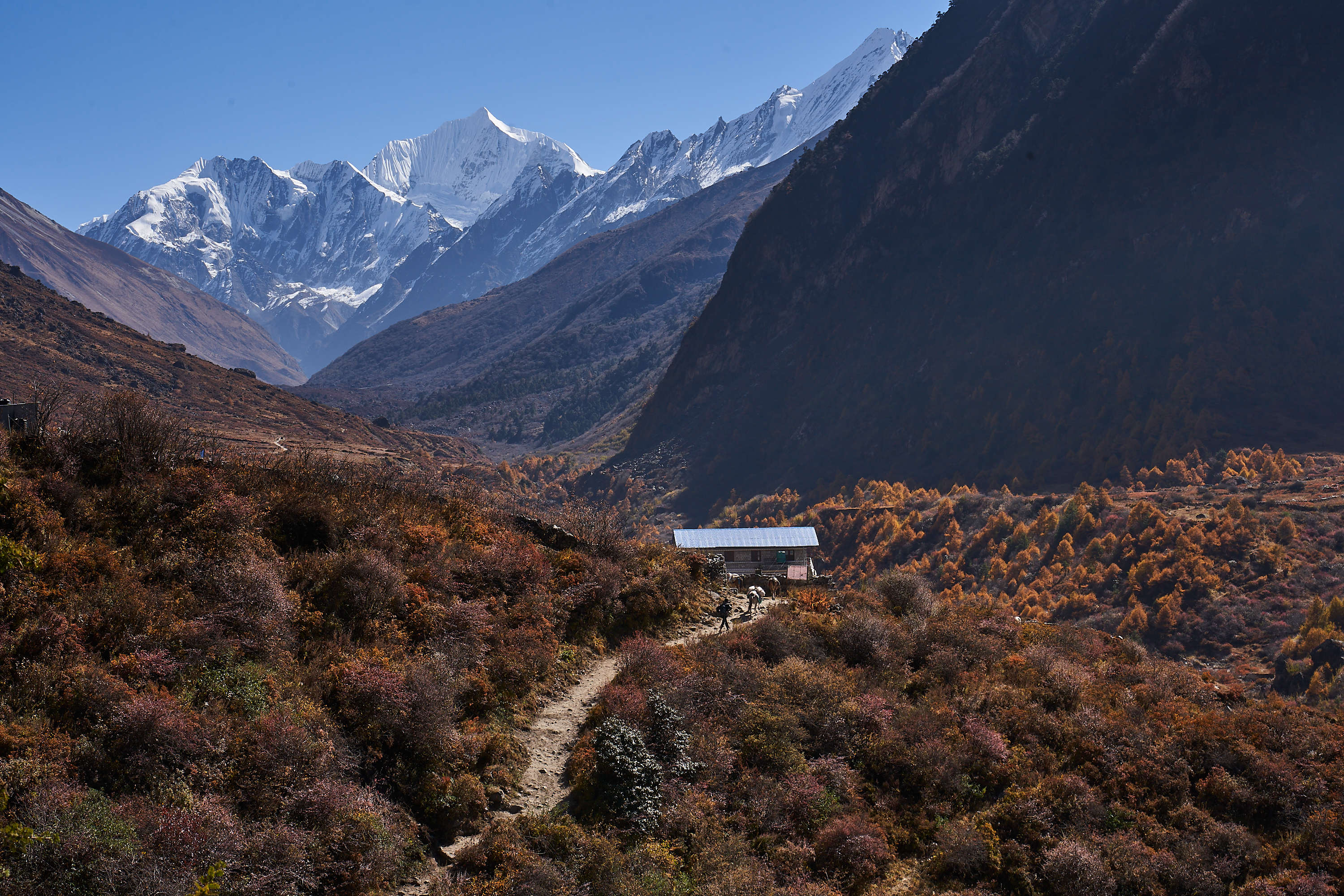
Top 10 FAQs About Yala Peak Climb
How long does it take to climb Yala Peak?
The full round trip from Kathmandu usually takes 11–12 days, including trekking to Kyanjin Gompa, acclimatization hikes, the summit attempt, and return.
Is Yala Peak difficult?
The climb is moderate physically challenging due to altitude, but technically easy compared to peaks like Island Peak or Mera Peak.
Do I need prior climbing experience?
No prior mountaineering experience is required, but a good level of trekking fitness and stamina is essential.
Can I climb Yala Peak without a guide?
While possible, it is not recommended. Guides ensure safety, especially in snowy conditions, and manage logistics like campsites, routes, and meals.
What permits are required for Yala Peak?
You need a TIMS card and a Langtang National Park permit. No separate climbing permit is required for Yala Peak.
What is the approximate cost of climbing Yala Peak?
A guided expedition typically costs USD 900–1,300, covering permits, guide, porter, meals, transport, and camping equipment. Independent trekking costs around USD 25–40 per day.
When is the best season to climb Yala Peak?
The spring (March–April) and autumn (October–November) seasons offer the best weather, clear skies, and spectacular mountain views.
What kind of accommodation is available?
Along the trek, you stay in teahouses/guesthouses, while the summit requires tented camping at Yala Kharka Base Camp.
What should I pack for Yala Peak?
Essential items include trekking boots, warm layers, crampons, gaiters, headtorch, water purifier, sunglasses, sunscreen, and power bank. Sleeping gear is typically provided by your guide at base camp.
Is insurance necessary for Yala Peak?
Yes, comprehensive travel insurance covering high-altitude trekking (up to 6,000m) and helicopter evacuation is strongly recommended. Providers like World Nomads and Global Rescue are popular choices.
Conclusion
Climbing Yala Peak in the Langtang Valley is one of the most accessible and rewarding Himalayan peak experiences in Nepal. With breathtaking views of Shisapangma, Langtang Lirung, Dorje Lakpa, and surrounding Himalayas, a culturally immersive trekking route, and a non-technical summit, it is the perfect introduction to Himalayan climbing.
Whether you are a seasoned trekker or a first-time climber, Yala Peak provides the ideal balance of adventure, safety, and awe-inspiring landscapes. The combination of trekking, acclimatization hikes, and summit experience ensures both a physically rewarding and culturally enriching journey.
Ready to embark on your Yala Peak adventure? Book your guided expedition today and experience one of Nepal’s most stunning and beginner-friendly Himalayan peaks. Don’t miss the chance to stand on a Himalayan summit with views that will last a lifetime!
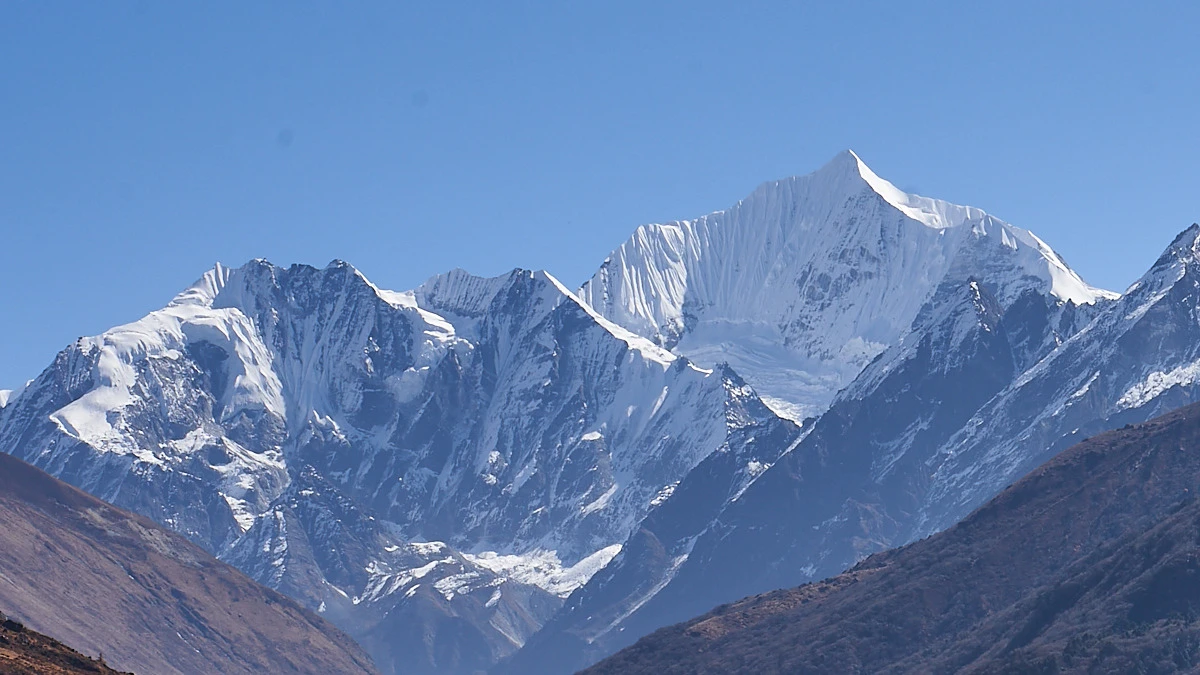






.webp)
